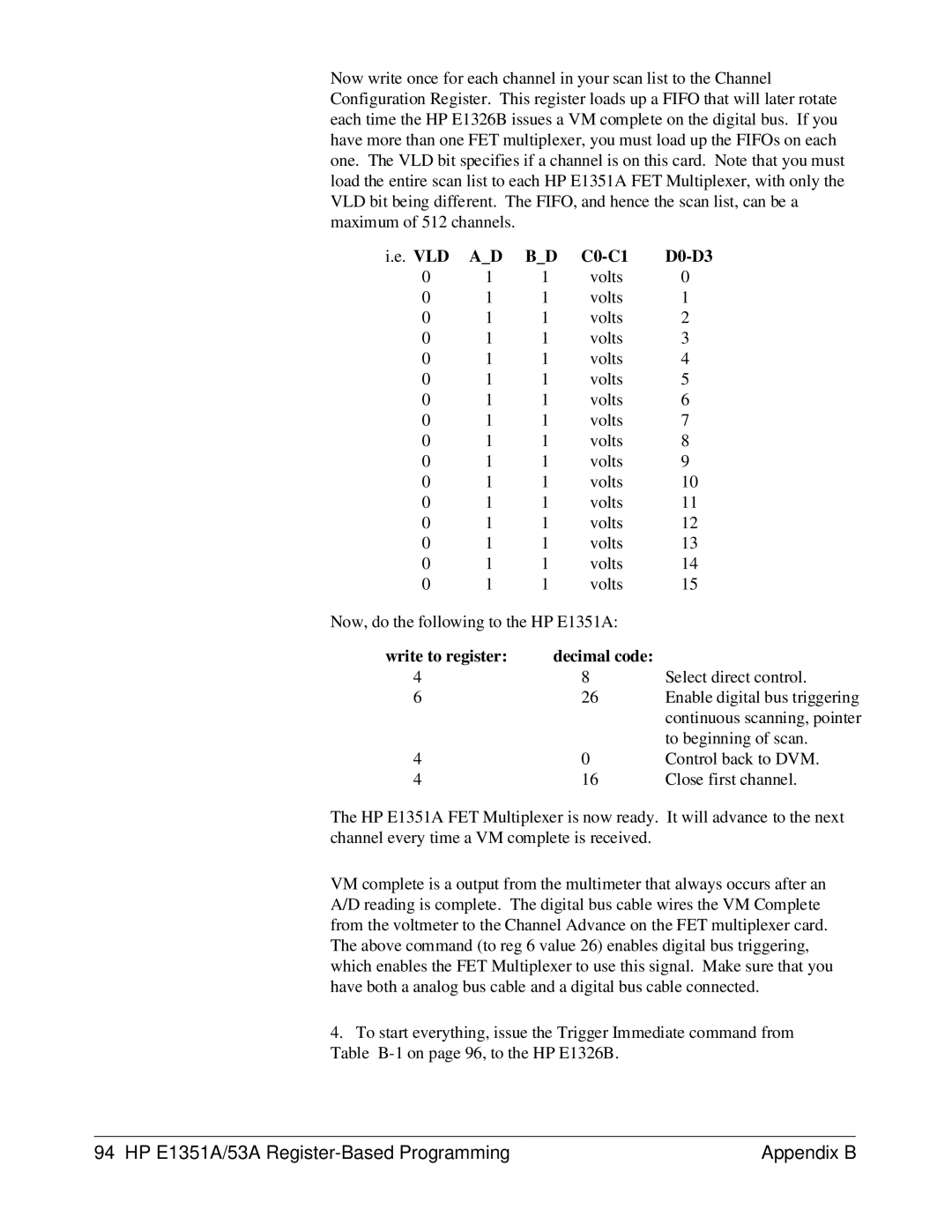Now write once for each channel in your scan list to the Channel Configuration Register. This register loads up a FIFO that will later rotate each time the HP E1326B issues a VM complete on the digital bus. If you have more than one FET multiplexer, you must load up the FIFOs on each one. The VLD bit specifies if a channel is on this card. Note that you must load the entire scan list to each HP E1351A FET Multiplexer, with only the VLD bit being different. The FIFO, and hence the scan list, can be a maximum of 512 channels.
i.e. VLD | A_D | B_D | ||
0 | 1 | 1 | volts | 0 |
0 | 1 | 1 | volts | 1 |
0 | 1 | 1 | volts | 2 |
0 | 1 | 1 | volts | 3 |
0 | 1 | 1 | volts | 4 |
0 | 1 | 1 | volts | 5 |
0 | 1 | 1 | volts | 6 |
0 | 1 | 1 | volts | 7 |
0 | 1 | 1 | volts | 8 |
0 | 1 | 1 | volts | 9 |
0 | 1 | 1 | volts | 10 |
0 | 1 | 1 | volts | 11 |
0 | 1 | 1 | volts | 12 |
0 | 1 | 1 | volts | 13 |
0 | 1 | 1 | volts | 14 |
0 | 1 | 1 | volts | 15 |
Now, do the following to the HP E1351A:
write to register: | decimal code: |
|
4 | 8 | Select direct control. |
6 | 26 | Enable digital bus triggering |
|
| continuous scanning, pointer |
|
| to beginning of scan. |
4 | 0 | Control back to DVM. |
4 | 16 | Close first channel. |
The HP E1351A FET Multiplexer is now ready. It will advance to the next channel every time a VM complete is received.
VM complete is a output from the multimeter that always occurs after an A/D reading is complete. The digital bus cable wires the VM Complete from the voltmeter to the Channel Advance on the FET multiplexer card. The above command (to reg 6 value 26) enables digital bus triggering, which enables the FET Multiplexer to use this signal. Make sure that you have both a analog bus cable and a digital bus cable connected.
4.To start everything, issue the Trigger Immediate command from Table
94 HP E1351A/53A | Appendix B |
